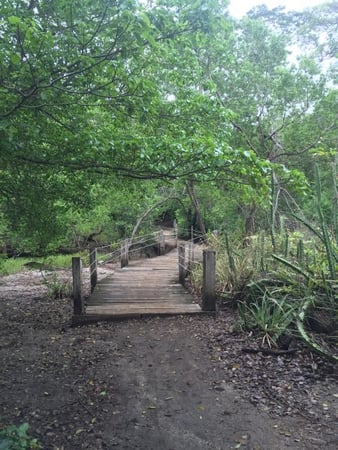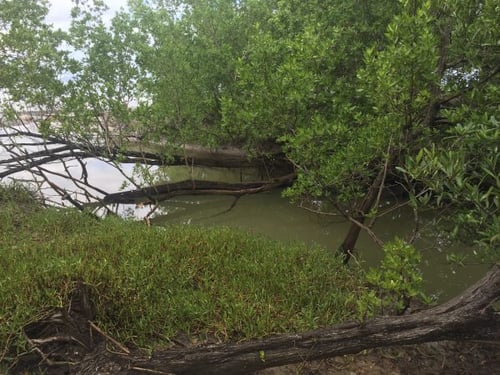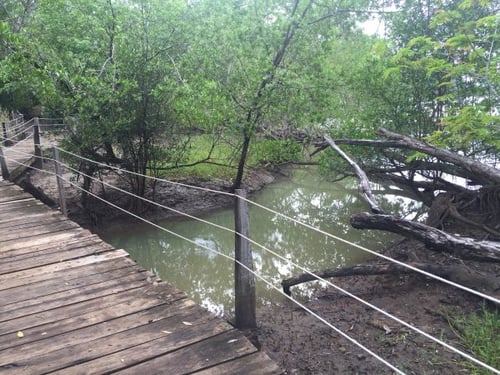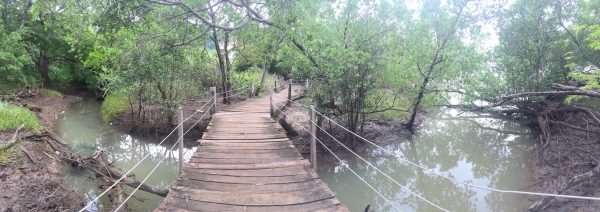Tuesday, October 30th, 2018.
Expecting clear blue skies for most of the day, with a few wispy white clouds floating by, a gentle breeze in the air coming from the Northeast, and light surf with waves around 1 ft tall. The sea is warm, hanging around 82 degrees, and visibility out on the ocean reaches the horizon. It’s one of those days that you can do pretty much anything in town and have a great time doing it.

As the seasons are changing, there’s one part of town that responds more quickly than most -- our natural mangrove, which is a nationally protected conservation area in Las Catalinas. Located just under the second bridge when heading from Playa Danta to Playa Dantita, our seasonal mangrove swamp represents one of the most unique ecosystems in town. Named after the mangrove trees that live there, mangroves are intertidal zones filled with brackish water, characterized by very low oxygen levels, high salt, and special kinds of plants and wildlife.

These are harsh conditions for wildlife to live in, which leads to an interesting biodiversity. The mangrove trees that we have here, black mangroves, are themselves very unique in that they possess pneumatophores, an upward-growing root that rises towards the surface of the water to adapt to limited oxygen supply, rather than growing down into the dirt. These root structures create a system that helps protect the many species of juvenile fish and tadpoles that make these areas their homes -- including many types of commercial fish like Red Snapper which use the mangroves as their spawning grounds.

These species, along with several species of bromeliads (a pineapple relative) and the beach apple (which should not be eaten, as it’s poisonous), are part of the reason that the bridges in the area were constructed. These structures allow us to explore the mangroves without disturbing them, which has more benefits than just preserving biodiversity. As a natural wetland, mangroves act as a buffer zone against flooding and erosion, and their crucial location as a spawning ground for commercial fish means that there is all the more reason to protect them.
As they are seasonal, take the opportunity to check out this habitat before the green season fully fades, as they tend to dry up around November and don’t return until April.
